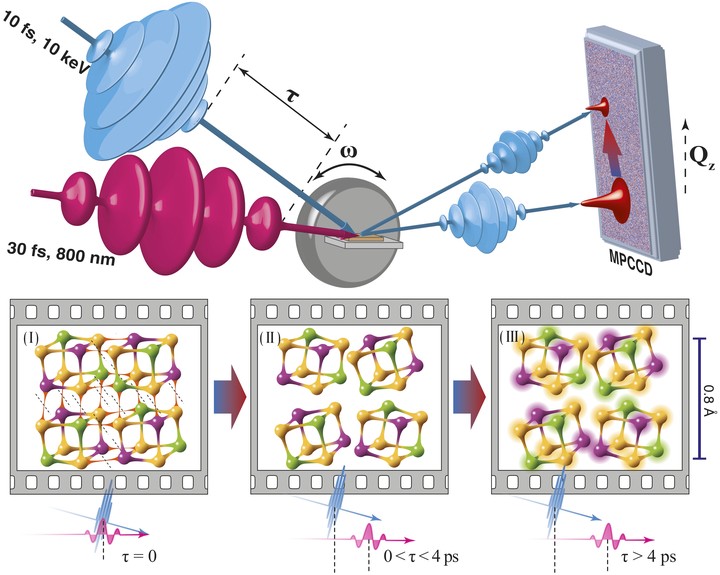Sub-nanometre resolution of atomic motion during electronic excitation in phase-change materials
 Image credit: Unsplash
Image credit: UnsplashAbstract
Phase-change materials based on Ge-Sb-Te alloys are widely used in industrial applications such as nonvolatile memories, but reaction pathways for crystalline-to-amorphous phase-change on picosecond timescales remain unknown. Femtosecond laser excitation and an ultrashort x-ray probe is used to show the temporal separation of electronic and thermal effects in a long-lived (>100 ps) transient metastable state of Ge2Sb2Te5 with muted interatomic interaction induced by a weakening of resonant bonding. Due to a specific electronic state, the lattice undergoes a reversible nondestructive modification over a nanoscale region, remaining cold for 4 ps. An independent time-resolved x-ray absorption fine structure experiment confirms the existence of an intermediate state with disordered bonds. This newly unveiled effect allows the utilization of non-thermal ultra-fast pathways enabling artificial manipulation of the switching process, ultimately leading to a redefined speed limit and improved energy efficiency and reliability of phase-change memory technologies